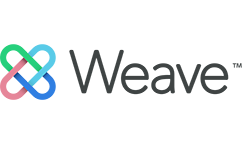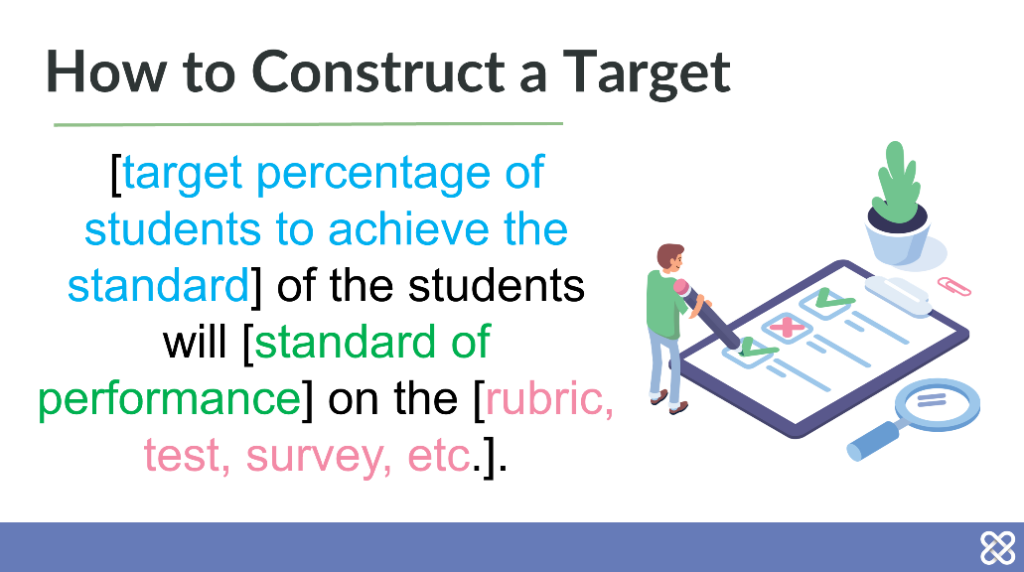A lot of time is devoted to writing student learning outcomes, which makes sense. These guide the rest of the assessment process and most directly tie to curriculum and programs. But what about writing targets? Without a well-written achievement target, we will not have reliable information on if those outcomes are being met.
While they sound simple enough, determining and writing targets is a bit tricky. What amount, number, or level is considered successful or met? What if we don’t meet it? Should a program aim for 100%? Is 50% too low?
First, we should agree on what a target accomplishes:
- A target answers the question, “What are you looking for? What would success look like?”
- An achievement target is the result, target, benchmark, or value that will represent success at achieving a given outcome.
- What is the expected standard of performance?
- How many students/participants should be able to achieve this standard or performance?
- Achievement targets can be specific numbers or trends.
- Should be aspirational, not minimal: Not to PROVE, but to IMPROVE
Examples of Achievement Targets:
- Students will achieve a score of 3 or 4 on the rubric.
- Average score on rubric is a 3 or better (on a scale of 0 to 4).
- 90% of the transcripts will be sent within three days.
- Each employee will participate in a minimum of two training/development programs per year.
- Acquisition statistics will indicate growth in the overall collections that support academic programs.
- 80% of students will “Meets Standard” or “Exceeds Standard” on all areas of the rubric related to written communication.
- 85% of students will earn at least an 8/10 on the questions related to economic policy.
- 75% of students will be satisfied with access to library resources.
- The average score for the decision-making workshop will be at least 3 (out of 5).
Pitfall: Writing Targets as part of your Outcome
Example:
- Outcome: 80% satisfaction rate from instructors
- Measure: Biannual instructor satisfaction survey
- Achievement Target: 80% satisfaction rate
- Remember: Outcomes detail what you want students to demonstrate, know, or do and usually use action verbs (not numbers)
- Possible Steps to Revision:
- Satisfied with what?
- New Outcome: Instructors will report satisfaction with the resources available for course development.
Pitfall: Writing your Achievement Target as part of your Measure
Example:
- Measure: Score a 3 or 4 on an identified technology assignment
- Remember: Measures are more general. Achievement Targets are specific.
- Possible Steps to Revision:
- Revise Measure to read: Identified technology assignment.
- Add Achievement Target: Students will achieve a 3 or 4 on the rubric.
Pitfall: Having the same Measure and Achievement Target, or a Vague Target
Example 1:
- Measure: Annual review of forms
- Achievement Target: Annual review of forms
- Remember: Achievement Targets are specific.
- Possible Steps to Revision:
- Go back and look at the outcome: “Forms and paperwork will be clear, concise & accurate.”
- If the annual review shows they are not clear, concise and accurate, what will need to happen?
- New Achievement Target: Decrease in number of revisions needed to make forms more understandable and accurate.
Example 2:
- Measure: 50 slots for scholarship recipients secured
- Achievement Target: 50 slots secured for scholarship recipients
- Remember: Measures are more general. Achievement Targets are specific.
- Possible Steps to Revision:
- Identify what it is you are doing to determine whether or not you have met the achievement target. THIS is your measure.
- New Measure: Track number of scholarship recipients.
Determining specific and appropriate achievement targets for your measures and outcomes ensures you will have data you can use to learn about your program and improve it.
Additional Resources:
- Using Implementation Fidelity Data to Evaluate and Improve Program Effectiveness by Dr. Sara J. Finney
- ‘Okay, I know what needs improvement… now what?’ Tools and framework to help faculty and colleagues make assessment-informed curricular improvements by Dr. Stephen Biscotte
- Assessment 101 Webinar
- Targets Make the Assessment Process Go Round – How to Make Sure Yours Work Well




